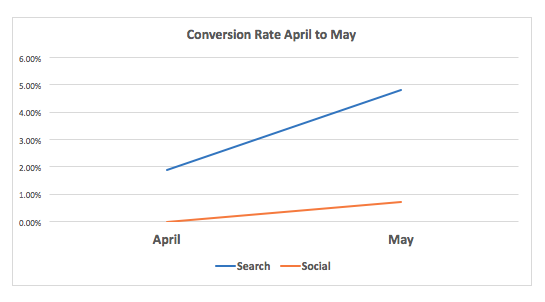Let’s face it. We live in a fast-paced era and work in a technology-driven industry where the ability and expectations to quickly make changes can inhibit critical thinking. In fact, when speaking to the pros of paid search, the speed at which marketers are able to make changes based on data is typically a highlight. We can increase bids, change budgets, update ads, migrate to new platforms, and more with a little analysis and a click of a mouse. However, from time to time the pace at which we can move can sometimes leave us missing the biggest piece of the puzzle – the consumer.
The Puzzle Starts With The Customer
Regardless of what niche of marketing you fall into you must begin by identifying your customer and thinking through how they will receive and perceive your marketing message. Digital more than any other method of marketing provides a direct line to your customer. Without the support of a strategy, the technology available in the digital world would certainly not produce the same results. By incorporating an understanding of the customer into search, social, and other digital technologies, you have the opportunity to increase the success of your campaigns.
According to an article on AMA.org, “Recent research demonstrates that when customers perceive a company as being “right for them,” it correlates to long-term revenue growth. Home Depot recently increased sales to $19.7 billion by offering a varied assortment of products, many of which can be personalized to a customer’s needs.
Tips To Think Like A Customer
- Leverage customer data
- Try to fundamentally understand what will and won’t make a connection
(It’s not about getting customers to like you) - Personalize as much as possible
- Use common sense and ask questions
Asking Questions Saved Our Conversion Rate
A week into launching a lead gen search and social campaign, we reported that while spend was pacing to target, conversions were falling flat. Our first problem-solving approach was to dive into the platforms to check ads, landing page links, and the conversion form submission. When that approach failed to turn into an “Ah-ha” moment we started from the beginning of the customer journey.
This campaign was targeting a particular geographic region around Indianapolis. We identified that the name of the service might lead potential customers to think their region wasn’t included in the area serviced. We quickly approached our contact to ask the following questions.
Q: Why is the service named using the sub-geo of the region serviced?
A: The service started in this region, but expanded over time to service a larger area.
Q: What is the perception of this sub-geo?
A: The area initially serviced wasn’t considered upscale and could be skewing the perception of the customer.
Q: Is there an opportunity to test removing the sub-geo region from the logo and text on the page.
A: Yes!
Results
Between April and May, we tested removing the sub-geo from the marketing materials. First, it was removed from the logo and the name of the service on the landing page. We also updated the landing page to prominently display service extended to all of Central Indiana. These tweaks increased our conversion rate from 1.11% to 2.63% week over week. Due to this success, we implemented across Facebook and the business changed the name of the service to “Central Indiana.” The month over month results got our campaign back in line with expectations increasing the conversion rate from 1.90% ending April to 4.80% in the first week of May.

Digital Marketers To Business Partners
Despite our fast-paced niche industry, it’s important to step back and think through the customer centric approach. This habit can spark a critical thinking process that can transform campaigns. As displayed above, by identifying details outside of our typical digital levers, we were able to quickly identify the piece of the puzzle that wasn’t quite connecting with customers. Ultimately, we were able to turn a campaign that was fizzling and provided value as a true business partner.



